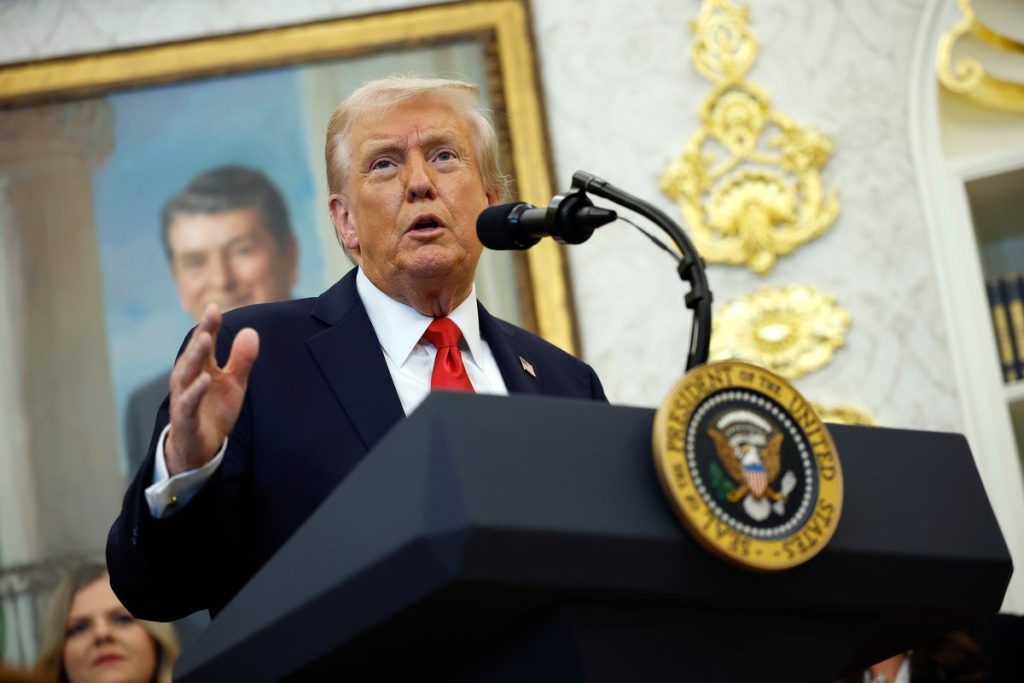Trump and Zelensky Set to Meet at the White House
The political stage is set for a significant encounter as U.S. President Donald Trump and Ukrainian President Volodymyr Zelensky prepare to meet at the White House. The timing of this meeting comes amidst heightened tensions and ongoing conflict in Ukraine, and marks their first face-to-face discussion in the Oval Office since their notorious clash in February.
A Historic Moment
Zelensky, whose leadership has been defined by navigating the tumultuous waters of war, arrives at this meeting hoping for a more favorable reception than during their last encounter. He aims to secure U.S. support to bolster Ukraine’s defenses as the war rages on, showcasing his determination to rally international allies around his country’s plight.
This meeting holds particular significance given their fraught history. The previous encounter in the Oval Office ended awkwardly, with Trump’s explosive criticisms overshadowing Zelensky’s requests for military support. Both leaders are aware of the stakes involved, not just for Ukraine, but for the geopolitical balance in Europe.
Awaiting a Warm Reception
Zelensky’s past experiences at the White House have been a mixed bag. During his previous visit in August, he was met with a more congenial atmosphere when accompanied by a coalition of European leaders. Trump had offered assurances for U.S. support against Russian aggressions but displayed a tendency to pressure Zelensky into concessions toward Putin’s demands.
As Zelensky steps into the Oval Office this time, he hopes to navigate these waters with a strategic approach, seeking a more supportive stance from the U.S. President, particularly concerning military aid and resources.
Military Aid and Tomahawk Missiles
A pivotal topic expected to arise during their talks is the potential provision of Tomahawk missiles to Ukraine. Just days prior, Trump indicated a willingness to consider this request, a move that could significantly change the dynamics on the battlefield. Tomahawk missiles are noted for their long range and precision, capable of striking deep within Russian territory and dismantling command structures.
However, this discussion is complex and fraught with implications. The Kremlin has expressed vigorous opposition, with Putin lauding the strategic consequences of such a decision. The conversations surrounding this sensitive transaction are sure to spark intense debate and scrutiny both in Washington and Moscow.
The Security Environment
As Zelensky prepares for this crucial meeting, heavy security measures have been implemented. Staying at Blair House, often described as “the world’s most exclusive hotel,” he is surrounded by a significant security presence, signaling the seriousness of the situation. The visibility of Ukrainian flags and the deployment of extensive police resources highlight the importance of this visit not only to Ukraine but to the international community.
A Shifts in Diplomatic Dynamics
Beyond their bilateral dialogue, broader implications for international diplomacy loom. Zelensky’s absence from the upcoming Trump-Putin talks scheduled in Budapest has raised eyebrows among European leaders, who emphasize the necessity for Ukrainian representation in discussions that directly affect its sovereignty. German Foreign Minister Johann Wadephul stressed that any political resolution should include Ukraine, reinforcing the message that the nation cannot be sidelined.
The Importance of Personal Attire
Adding an intriguing layer to this meeting is Zelensky’s choice of attire. He has consistently opted for combat gear over formal suits, a symbolic choice intended to represent his ongoing commitment to his country’s war effort. His refusal to don a suit underscores both personal conviction and a message of resistance against perceived political norms enforced by Trump. Such attire choices serve as a powerful statement in the ongoing narrative of strength and resilience amidst adversity.
Media Attention and Public Scrutiny
The media is poised to scrutinize this meeting, as it encapsulates a complex interplay of power, warfare, and international relations. Commentary surrounding the meeting may further dissect the contrasts between Zelensky’s human-focused approach to leadership and Trump’s sometimes brash, headline-grabbing style. Each leader’s rhetoric will be closely analyzed for signs of cooperation, tension, and strategic alignment in the face of a dire conflict.
As the hour approaches for this pivotal encounter, both leaders are certainly aware that the world is watching. With wars being fought not just on the battlefields but also in the realm of public opinion and policy, the outcome of their discussions could reverberate far beyond the meeting room.

